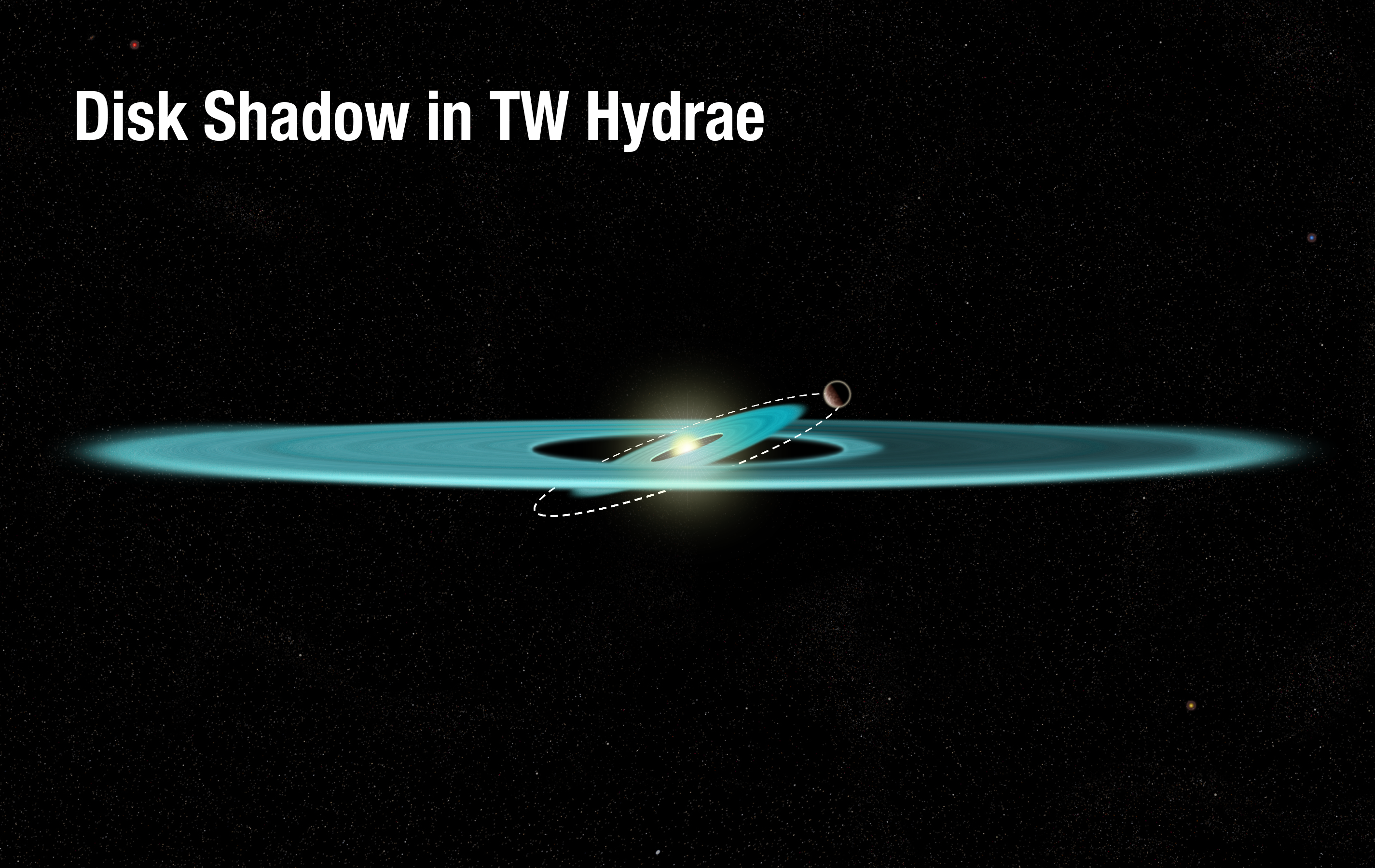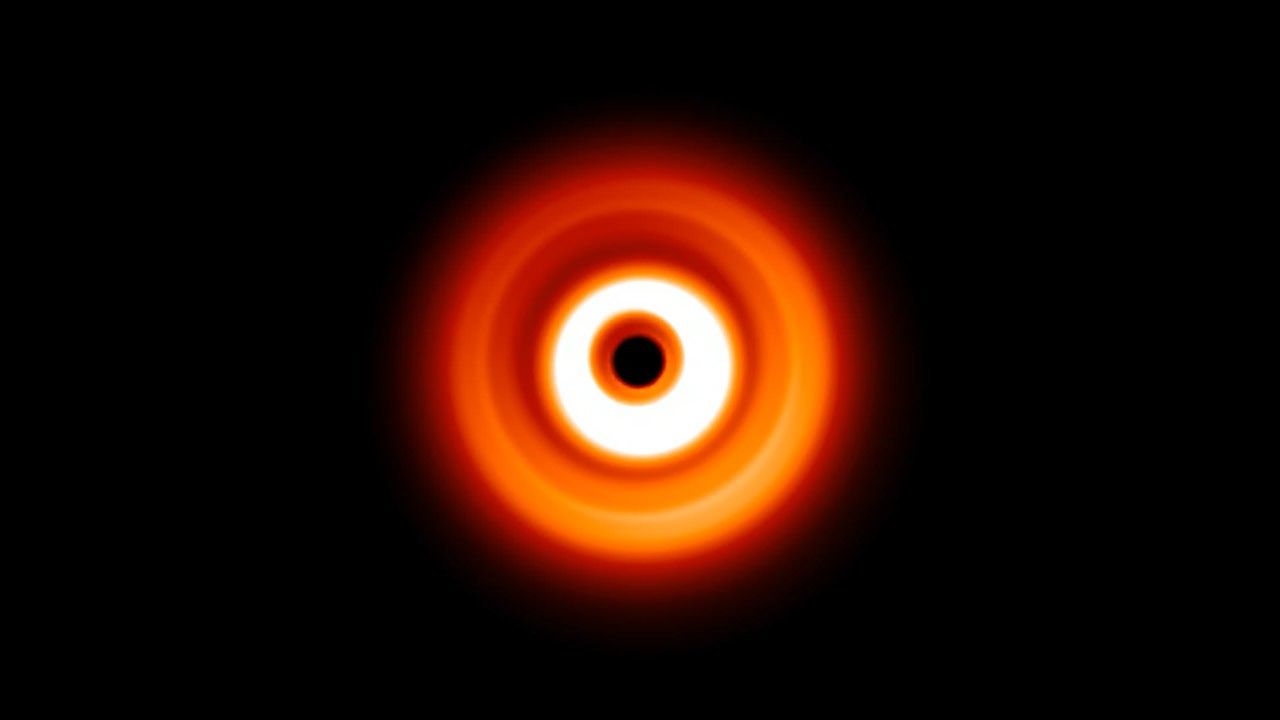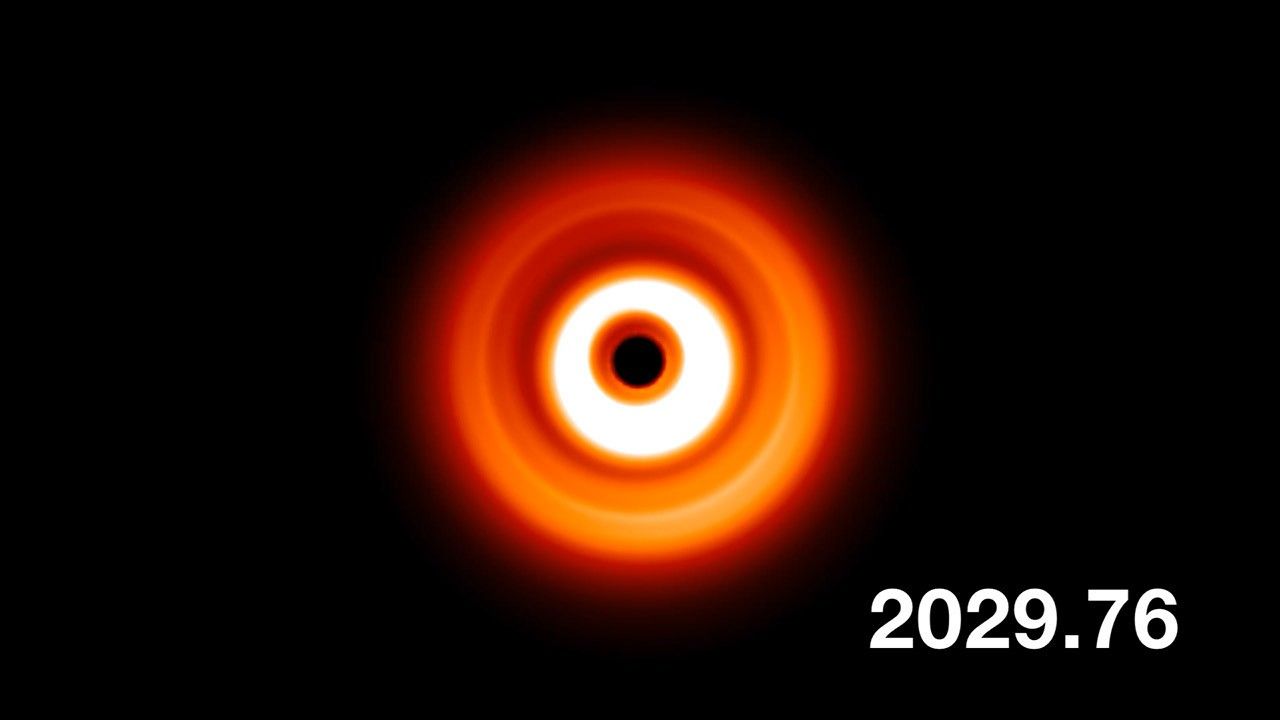1 min read
The Making of a Shadow in TW Hydrae’s Disk

This diagram reveals the proposed structure of a gas-and-dust disk surrounding the nearby, young star TW Hydrae.
The illustration shows an inner disk that is tilted due to the gravitational influence of an unseen companion, which is orbiting just outside the disk.
The tilted inner disk is the best explanation for a shadow covering part of the disk's outer region. The warped disk is blocking light from the star and casting the shadow across the disk. The nature of the darkening was first revealed in Hubble Space Telescope archival observations, which showed that the feature moved around the star at a much faster rate than any phenomenon that would be physically linked to the slowly rotating disk.
TW Hydrae is about 8 million years old and resides 192 light-years from Earth.
- Release DateJanuary 7, 2017
- Science ReleaseHubble Captures ‘Shadow Play’ Caused by Possible Planet
- Credit
Related Images & Videos

Shadow on TW Hydrae's Disk
These images, taken a year apart by NASA's Hubble Space Telescope, reveal a shadow moving counterclockwise around a gas-and-dust disk encircling the young star TW Hydrae. The two images at the top, taken by the Space Telescope Imaging Spectrograph, show an uneven brightness...

Shadow on TW Hydrae Disk Visualization
This simulation shows a shadow sweeping around a gas-and-dust disk encircling the young star TW Hydrae. The simulated view is based on an analysis of data taken between 1998 and 2016 by NASA's Hubble Space Telescope. This video also shows what the moving shadow might look like...
Share
Details
Claire Andreoli
NASA’s Goddard Space Flight Center
Greenbelt, Maryland
claire.andreoli@nasa.gov





























